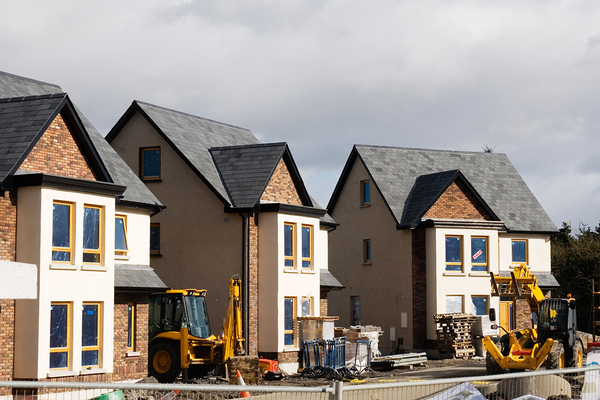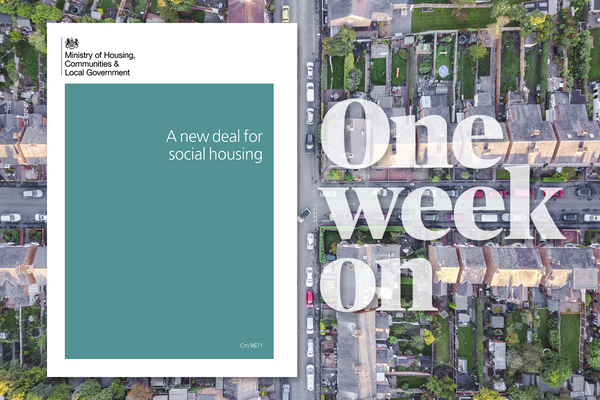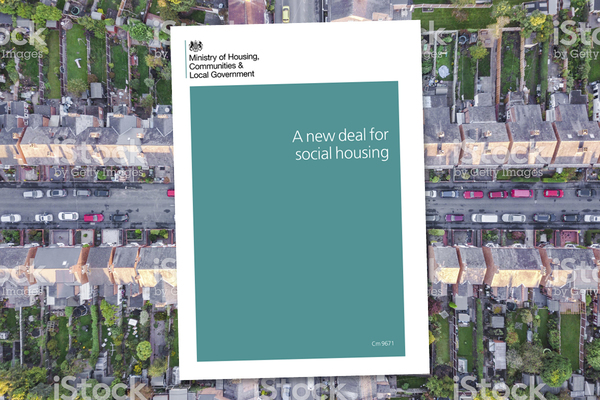Unleashing housing associations’ untapped development capacity
As Homes England writes to housing associations setting out its requirements for strategic partnerships, Helen Collins writes about the significant potential for associations to build more homes
The government’s Social Housing Green Paper makes much of the eight strategic partnerships between housing associations and Homes England, which will deliver an extra 23,500 homes by 2022 – including 14,240 additional grant-funded affordable homes.
As a result of this positive experience, the green paper poses the question: “What level of additional affordable housing, over existing investment plans, could be delivered by social housing providers if they were given longer-term certainty over funding?”
Following the recent letter from Homes England to potential future strategic partner housing associations, we now know the minimum additional requirements for potential partner associations.
But what else can Homes England and housing associations bring to the table?
“Although Section 106 is a useful means of supply, land-led programmes are key to supporting increased output.”
Savills is supporting Homes England on the strategic partnerships initiative. Although currently strategic partnerships run to March 2022, as part of the conversation we asked housing associations to provide a 10-year view of what could be delivered with grant certainty.
The effect could be transformational.
Too many housing association development programmes still rely heavily on homes bought through the Section 106 process, partly because grant has not been available at levels sufficient to support land-led delivery.
Although Section 106 is a useful means of supply, land-led programmes are key to supporting increased output.
By controlling land, housing associations can provide more certainty for the supply chain and support capacity-building in small and medium-sized enterprises.
They can also stimulate increased use of modern methods of construction, as well as directly control design and construction quality.
With grant certainty to 2028, housing associations said they could:
- Plan for the long term and invest in skills and infrastructure for larger, land-led programmes
- Increase the level of land-led development activity – with the associated greater costs and risks (than Section 106) – secure in the knowledge of grant availability and tenure flexibility
- Commit to invest in buying sites that will take longer to build out, as well as short-term delivery opportunities including investing in land assembly, development options, and buying larger-scale sites
The housing association strategic partners also suggest that the increased flexibility of the grant support to allow associations to alter the tenure mix will also increase the build out rate.
This was a key point identified by Sir Oliver Letwin in his Independent Review of Build Out Rates published in June.
So, while we absolutely agree that longer-term certainty is a key factor to boosting delivery, there is still disparity between the different timescales that affect development plans.
- Mr Letwin’s report concludes that “the median build out period for (large) sites…is 15.5 years”, a large site begun today will be not be fully completed until 2033
- Rent certainty has only been promised to 2025
- The new Homes England strategic partnerships run to March 2022
- Local authorities are required to spend Right to Buy receipts within 3 years, or by 2021 for a sale today
Wouldn’t it be great if these timetables could be aligned? For ambitious housing associations looking to increase supply, partnerships should ideally extend for at least 10 years, say to 2028.
Rent certainty should extend beyond that to permit associations to raise funding.
And local authorities should be able to deploy their Right to Buy receipts over the same period – the green paper helpfully proposes an extension of the timetable to give councils a chance to commit to development.
If the government wants something for something it could offer these certainties only to those landlords prepared to enter into partnerships to deliver additional homes.
Research by Savills in November 2016 examining the financial capacity of England’s largest 175 housing associations concluded there was £7.4bn of financial capacity that associations could access.
With support from the government in the form of around £1.5bn of land or subsidy, 44,000 additional homes could be built each year by 2029. That would take the total number of homes built by housing associations to 84,000 a year.
Our research concluded that the untapped capacity lies principally in medium-sized housing associations.
The green paper notes the importance of the Affordable Housing Guarantee Scheme to the same smaller and medium-sized providers who are less well placed than the larger associations to access the capital markets in their own right.
For the smaller providers additional help may be necessary to help them access larger opportunities, but this requires them to collaborate to create effective multi-landlord partnerships.
The more proactive, pragmatic approach heralded by the green paper is welcome. The additional flexibilities offered, and already being developed in the strategic partnerships between Homes England, regional partners and housing associations, offer positive evidence that significant potential exists to further increase housing supply.
Helen Collins, head, Savills Housing Consultancy
Strategic partnerships: housing association deals with Homes England
| Partnership | Grant | No. of additional affordable starts to March 2022 |
|---|---|---|
| EMH group | £30.5m | 748 |
| Great Places | £29.2m | 750 |
| Home Group | £85m | 2,300 |
| Hyde | £95.4m | 1,623 |
| L&Q | £85m | 1,724 |
| Matrix Partnership | £77m | 2,257 |
| Places for People | £74m | 2,603 |
| Sovereign/Liverty | £111.5m | 2,275 |
Table published by Homes England on 3 July 2018
KEY PROPOSALS IN THE SOCIAL HOUSING GREEN PAPER
- New 'league tables' of housing providers based on key performance indicators, surrounding services such as repairs and neighbourhood management. This could be linked to housing grant.
- Consideration to scrapping of the current 'serious detriment' test, to allow 'Ofsted-style' tougher consumer regulation
- New home ownership options such as allowing tenants to buy as little as 1% of their property each year through shared ownership. This would only apply to new shared ownership purchases.
- Ditching of plans to force social landlords to offer fixed term tenancies rather than lifetime tenancies in social housing
- Ditching of plans to force councils to sell off their most valuable social housing when it becomes vacant
- The potential introduction a new stock transfer programme from councils to 'community-led' housing associations
- The return of guaranteed debt funding to help the development of affordable homes, and longer term 'strategic partnerships' for developing housing associations
Social Housing Green Paper: full coverage
All our Social Housing Green Paper coverage in one place:
Green paper measures are not enough to create May’s ‘new generation’ of council homes Green paper proposals are welcome but much more is needed to support councils to build, writes John Bibby
Green paper shows ministers now see associations as trusted partners Focusing on the failure of the green paper to address supply misses the point, writes Boris Worrall
Government should focus on building on what is already strong Philippa Jones considers the Social Housing Green Paper through a slightly different lens
We need more than a week of delayed announcements bundled together Jules Birch reflects on the government’s ‘Housing Week’ announcements
The regulator should monitor how associations assist homeless people Government announcements this week are positive, but any enhanced role for the English regulator should include looking at homelessness prevention work, argues David Bogle
The regulator’s role should be limited to dealing with systemic failures Julian Ashby suggests the Housing Ombudsman Service should deal with all complaints
The green paper shows ministers are in listening mode Despite some glaring omissions, the government appears to be in listening mode and it is important the sector takes advantage, argues Emma Maier
A short history of social housing league tables Attempts to create league tables for housing associations are nothing new. Mervyn Jones looks at how they have worked in the past
League tables could prove blunt and counter-productive, sector warns Housing figures criticise government proposals to measure social landlords against performance indicators
Government ‘must decide how proactive regulator should be’ on consumer standards Ministers now face a dilemma over the regulator’s focus, sector figures say
The Green Paper: a golden opportunity missed? Melanie Rees assesses the Social Housing Green Paper against recommendations drawn up by the Chartered Institute of Housing and finds the government comes up short
Longer strategic partnerships and guranteed debt to boost social housebuilding The Social Housing Green Paper outlines key ways of boosting supply
The green paper is remarkable progress but it is still not enough The green paper suggests the government appears to be re-writing much of its policy since 2010, but more needs to be done, writes Jules Birch
Green paper marks a ‘milestone’ on resident involvement The government’s recognition residents need clear information is to be welcomed, now it up to the sector to embrace tenant involvement, writes Paul Hackett
Ministers consider stock transfer programme to community-led associations The stock transfer programme could be revived under proposals in the housing green paper
Access to housing grant could be tied to new league tables Grant could be awarded according to how well landlords meet performance indicators, the paper suggests
Ofsted-style regulation of tenant services proposed The government is considering expanding the Regulator for Social Housing’s remit to intervene over tenant services and give it a more “proactive approach to enforcement”
Government proposes dropping one-for-one Right to Buy replacement commitment A consultation paper published alongside the green paper proposes a broader measurement to replace the one-for-one pledge
A list of recent housing policy U-turns The green paper confirms yet more housing policy U-turns from the government, which has spent the past two years dropping policy ideas developed under the David Cameron government. Here is a rundown of the major changes in policy direction
Sector welcomes green paper but calls for more ‘ambitious investment’ Reaction to the proposals, from the National Housing Federation, Chartered Institute of Housing and more
Morning Briefing: reaction to green paper announcements how the media reported the proposals trailed by the government overnight
Government drops plans to force councils to sell higher-value stock The government drops plans to force councils to sell higher value homes
League tables and ‘sharper teeth’ for regulator in social housing green paper Ministers reveal some of the things in the paper ahead of its publication
Grenfell survivors: green paper does not go far enough survivors of the Grenfell Tower fire have said the measures published in the Social Housing Green Paper do not do enough to rectify issues in the social housing sector













